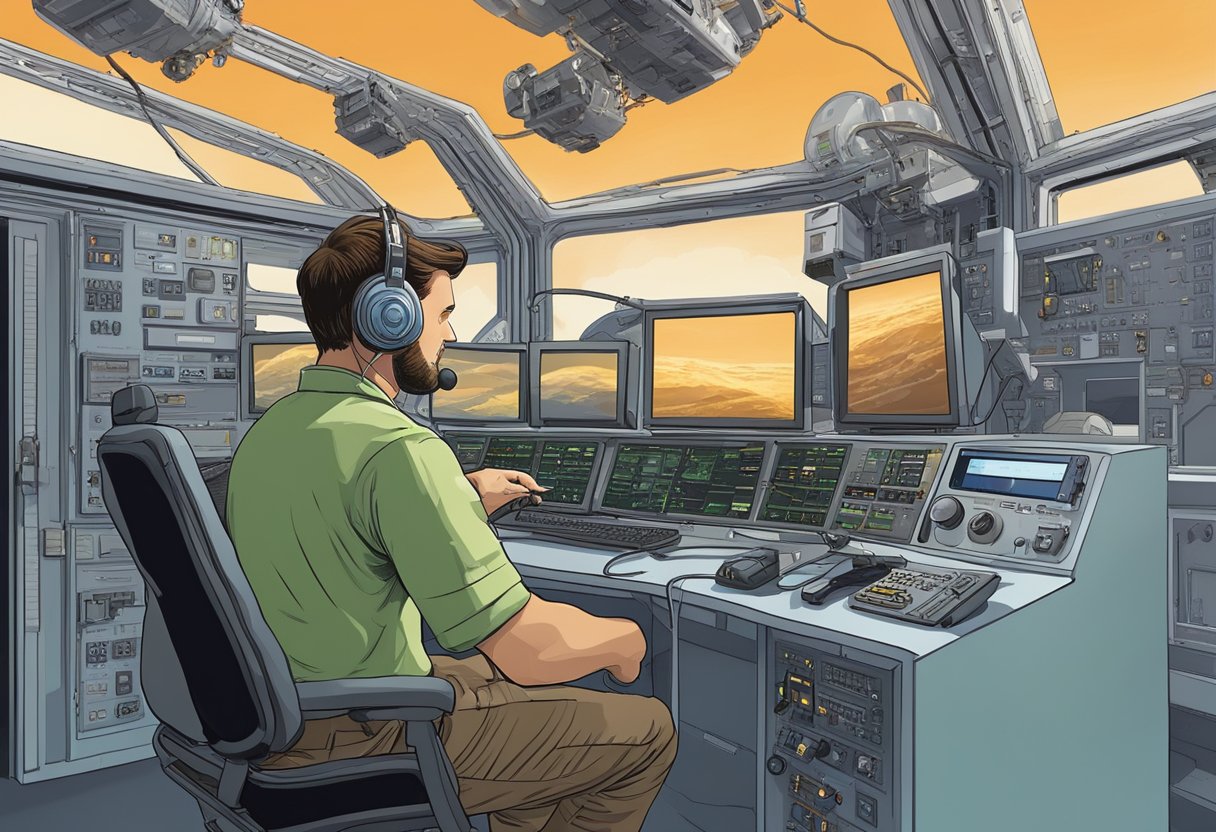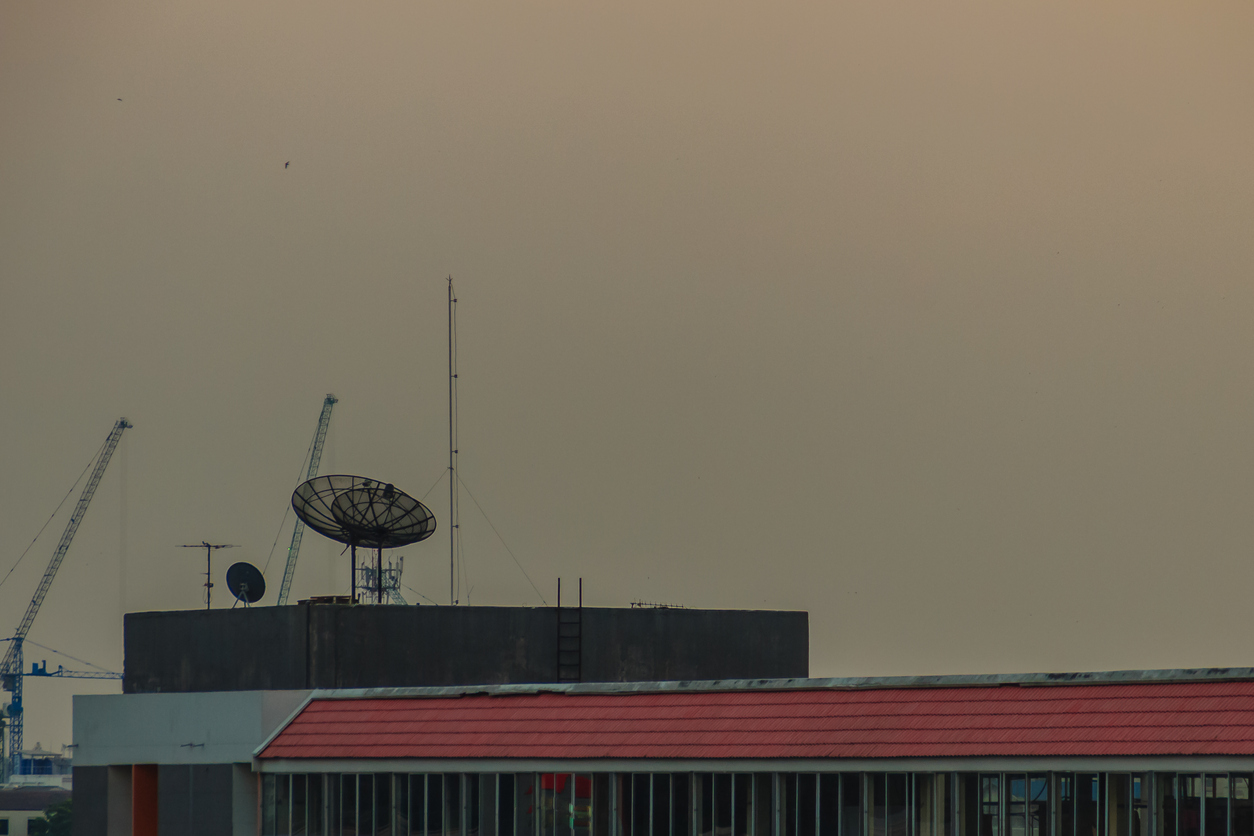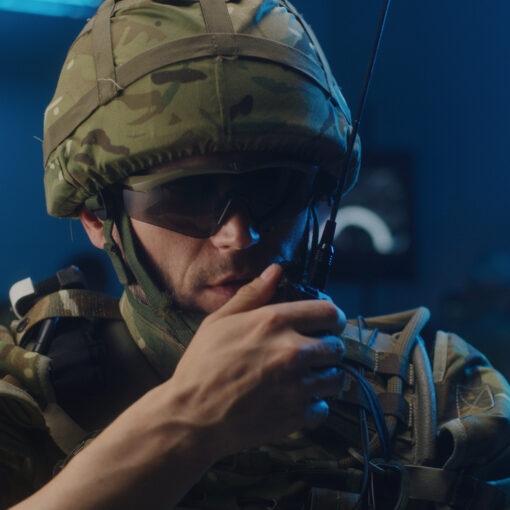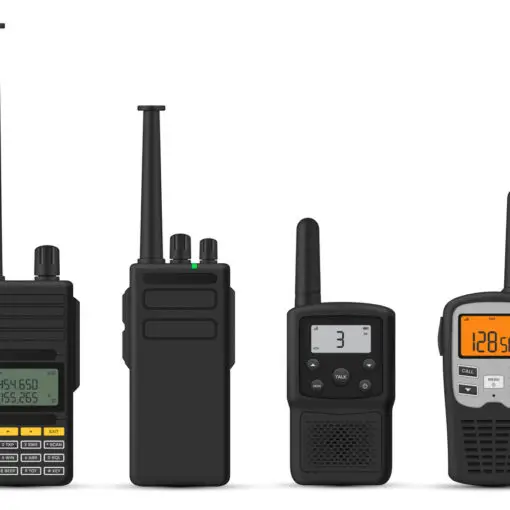Ham radio and amateur satellites offer unique opportunities for non-professional individuals to communicate across distances that span the globe and even reach into space. By utilizing equipment that ranges from simple handheld transceivers to more complex setups, enthusiasts can make contact with fellow operators and even access the International Space Station (ISS). This aspect of amateur radio not only serves as a hobby but also contributes to educational outreach and provides valuable data for scientific research.


As the ISS orbits the Earth, it carries onboard an amateur radio station that can be accessed by licensed amateur radio operators. These operators, often referred to as ‘hams,’ engage in this activity not only for social connection but as part of a broader learning process which encompasses technical proficiency and understanding of radio science. This endeavor bridges the gap between professional astronauts and the general public, fostering a greater appreciation for space exploration and communication technologies.
Key Takeaways
- Ham radio enables communication with the ISS and other operators worldwide.
- Accessing the ISS requires technical knowledge and a license to operate amateur radio equipment.
- Amateur radio satellites extend the reach and capabilities of ham radio enthusiasts.
Understanding Ham Radio Basics
Before diving into the world of amateur radio operations, it’s essential to grasp the fundamentals of ham radio and the process of becoming a licensed operator. These are the first steps in accessing a myriad of communication possibilities, including connecting with the International Space Station (ISS).
What is Ham Radio?
Ham radio, or amateur radio, refers to the use of designated radio frequency spectrum for purposes of private recreation, non-commercial exchange of messages, wireless experimentation, self-training, and emergency communication. The term “ham” is a colloquialism that was originally used to describe amateur radio operators with a reputation for poor Morse code skills. It has since become a proud moniker for the radio hobbyist community.
Amateur radio operates on a variety of frequencies, from Very High Frequency (VHF) to Ultra-High Frequency (UHF) and beyond, allowing for a wide range of activities. Users can make contact with other amateurs locally and worldwide, participating in contests, providing communication for public events, or even engaging with astronauts on space missions.
Obtaining Your Ham Radio License
In order to transmit on ham radio frequencies in the USA or Canada, one must obtain a ham radio license from the relevant authorities—the Federal Communications Commission (FCC) in the USA, or Innovation, Science and Economic Development Canada (formerly Industry Canada) for Canadians. This requires passing an examination that proves your proficiency in basic regulations, operating practices, and technical knowledge.
Joining amateur radio clubs is a valuable step in preparation, as they frequently offer courses, mentoring, and resources for prospective ham radio enthusiasts. Organizations like the American Radio Relay League (ARRL) provide extensive information and support for individuals intending to get licensed. Once licensed, operators receive a call sign that legally identifies them on the frequencies.
To get started, here is a basic outline of the steps to obtain your license:
- Study: Learn the material covered in the licensing examination.
- Resources: Manuals, online courses, club-led classes
- Practice: Take practice exams to gauge your readiness.
- Exam: Find an examination session through clubs or the ARRL website.
- Call Sign: Once passed, you’ll receive your call sign to use on air.
With the appropriate license, an operator gains access to various bands and modes of communication, opening the door to a global community of individuals who share a passion for ham radio.
Getting Started with Amateur Satellites


Amateur satellites provide a unique opportunity for radio enthusiasts to communicate over long distances, experiment with digital communications, and even support scientific missions. This section covers the essentials to get involved in this rewarding aspect of amateur radio.
Types of Amateur Satellites
Amateur satellites, commonly organized by AMSAT and AMSAT-UK, come in various types. One can distinguish these by their function or orbit. Some are simple transponders that relay signals, while others carry sophisticated scientific equipment. For beginners, the easiest to access are typically the FM satellites, which use either 2.5 kHz deviation FM for narrow deviation or 5 kHz deviation for wider FM signals. Hand-held rigs are suitable for narrow deviation FM satellites.
Tracking and Equipment Needed
To communicate via amateur satellites, enthusiasts need a reliable method of tracking these satellites across the sky. Websites like N2YO.com provide real-time tracking information. Antennas must be directional and adjustable, such as Yagi-Uda antennas, to properly receive signals from satellites that move across the sky.
The core of the personal ground station is the transceiver, which allows for both sending and receiving signals. Satellite communication typically requires a dual-band transceiver that can handle the uplink and downlink frequencies simultaneously. The use of hand-held rigs is possible but a full-fledged ground station setup with a controlled environment may offer better performance and comfort.
Accessing the International Space Station
The International Space Station (ISS) is not just a marvel of modern engineering; it is also a hub for amateur radio communications. Enthusiasts and educational groups have the opportunity to engage with astronauts aboard the ISS using radio frequencies, which opens up a vast potential for STEM education and global interaction.
Amateur Radio on the ISS
Amateur Radio on the ISS (ARISS) is a cooperative venture that encourages students, teachers, and the general public to engage with the space station through amateur radio. Frequencies set aside for this purpose include an uplink frequency of 144.49 MHz for regions 2 and 3 (the Americas, and Asia, respectively) and 145.20 MHz for region 1 (Europe, Africa). The common downlink frequency across all regions is 145.80 MHz. These frequencies allow for direct communication, weather satellite receptions, and even SSTV (Slow Scan Television) transmissions. The ARISS amateur radio gear onboard the ISS is a crucial part of its STEM educational mission, while simultaneously serving the amateur radio community.
Making Contact with ISS Crew Members
To make contact with the ISS, one must know the available call signs which vary depending on the space station’s crew at the time. For instance, the call sign for the United States segment is NA1SS. Contacts are generally facilitated through scheduled ARISS educational contacts or during an astronaut’s individual periods of free time. Rigorous planning and coordination with ARISS are imperative for educational institutions planning to make contact with astronauts onboard the station. Individuals can also attempt unscheduled contacts during the astronauts’ leisure time on the ISS, although success is not guaranteed. Properly setting up equipment and familiarization with the procedures for contacting the ISS increases the likelihood of a successful interaction.
Communicating Via Amateur Radio Satellites
Communicating with the International Space Station (ISS) through amateur radio satellites requires understanding specific frequencies and modes, and setting up the right equipment. Here, the focus is on the technical aspects of reaching out to space via ham radio.
Understanding Frequencies and Modes
Amateur radio satellites function as repeaters in space. They receive signals on one frequency (uplink) and transmit them on another (downlink). Most communication is carried out using FM (Frequency Modulation) due to its simplicity and popularity among amateur radio operators. The Columbus Module, a part of the ISS, is equipped with ham radio equipment that facilitates several modes including Slow Scan Television (SSTV) for image transmission, and Automatic Packet Reporting System (APRS) for text messaging and GPS location sharing.
When operating through satellites, operators must consider the Doppler effect, which causes the frequency of the received signal to vary. Amateurs may use scanners to track the satellite’s signal across a passband or manually adjust their frequency during the contact.
Setting up Antennas and Transceivers
The antenna setup for satellite communication usually involves a Yagi antenna, which must be aimed precisely at the satellite as it moves across the sky. Adjusting for the correct azimuth and elevation is crucial for maintaining a strong signal. Operators may use automatic antenna trackers, which adjust the antenna’s position in real-time.
Transceivers must be capable of operating on the frequencies designated for satellite work, usually within the 2-meter (144-148 MHz) and 70-centimeter (420-450 MHz) amateur bands. A critical factor to monitor during transmission is the Voltage Standing Wave Ratio (VSWR), which indicates the efficiency of power transfer from the transceiver to the antenna. Lower ratios mean less power is being reflected back, which is optimal.
Additionally, the ISS has a digipeater, a digital repeater that can relay messages from earth-based amateur radio stations. By tuning into the correct uplink frequency and using appropriate encoding protocols, operators can send APRS data through the digipeater.
Advancing Skills and Participation
The realm of amateur radio and satellite communication offers a unique opportunity for individuals and groups to enhance their technical skills and engage with a global community. It is a gateway for educational growth and international collaboration, particularly through organizations like ARISS and AMSAT.
Joining ARISS and AMSAT Communities
The Amateur Radio on the International Space Station (ARISS) initiative encourages participation from a diverse audience, including students, teachers, and parents. By getting involved with ARISS, communities open doors to hands-on learning experiences that drive interests in science, technology, engineering, and math—commonly known as STEM fields. This engagement is further solidified through the construction and operation of AMSAT satellites, where the amateur radio community can actively communicate with orbiting satellites, thereby expanding their knowledge and skillset.
-
Pathway for Schools: AMSAT provides resources and guidelines for schools to engage with the amateur radio community. Teachers can utilize these tools to incorporate practical STEM education into their curriculum.
-
Learning for Students and Communities: Participation in ARISS and AMSAT activities fosters a learning environment that goes beyond traditional classroom settings. Communities can witness science in action as students communicate with astronauts aboard the ISS.
Educational Outreach Through Ham Radio
The integration of ham radio within educational settings allows for a tangible experience of learning about space and satellite communication. ARISS Program offers a planned contact with a crew member on board the ISS, creating an inspirational experience for students and a platform for educators to enrich their teaching strategies in STEM fields. The hands-on approach not only advances technical skills of all involved but also promotes community involvement and interest in space technology and exploration.
-
Active Engagement: Through events and educational contacts, schools can position ham radio as an active educational tool, stimulating student curiosity in science and technology.
-
Enhanced Learning Opportunities: Parents and teachers play a critical role in nurturing a child’s learning curiosity, and with the support from AMSAT and ARISS, they can provide unique opportunities to explore the real-world application of STEM education.
Technical Aspects of Amateur Radio Satellites
Amateur radio satellites provide a complex but fascinating avenue for radio enthusiasts to communicate over long distances. Utilizing space-based transponders, these satellites require specific technical considerations to ensure successful communication.
Understanding Antenna Polarization
Antenna polarization significantly affects the quality of communication between the amateur radio satellite and ground stations. Polarizations must match for optimal signal transfer, with many satellites using circular polarization to accommodate shifts caused by their movement in orbit. A helical antenna, for example, is often used for satellite communication due to its inherent circular polarization which can be either left-hand or right-hand. The orientation (e.g., RHCP or LHCP) must correspond with the satellite’s emitted signal polarization to minimize signal loss.
The Role of Ground Planes in Communication
A ground plane effectively serves as a reflector for the radiating element of an antenna, influencing its radiation pattern and impedance. For a ¼ wave ground plane antenna, the ground plane consists of several conductors, or radials, that extend from the base of the antenna and are typically spaced at 90-degree intervals. This configuration is commonly employed in VHF/UHF satellite communications as it provides a clear radiation pattern with less signal obstruction, enhancing the communication with amateur satellites.
The elevation and azimuth of a satellite are critical; they dictate the positioning of an antenna system to ensure it is oriented properly to communicate with a satellite as it traverses the sky. By carefully adjusting the antenna for correct azimuth (horizontal rotation) and elevation (vertical angle), a ground station can maintain the strongest possible signal from the satellite during its pass.
Moreover, additional antenna types such as colinears can be advantageous for satellite communication. Colinear antennas, with their increased gain and narrow beamwidth, can help in the precise tracking of satellites, especially in situations where the satellite’s path is well-known and predictable.
The use of a deviation filter becomes relevant in modulating transmissions to and from satellites. A deviation filter helps in fine-tuning the signal to minimize bandwidth usage and prevent adjacent channel interference — crucial when accessing narrowband transponders on amateur satellites.
By accounting for these technical factors — antenna type and polarization, ground plane design, and specific positioning requirements — amateur radio operators can successfully navigate the challenges of satellite communication to access platforms like the International Space Station.
Ham Radio Satellite Operations and Etiquette
Engaging with amateur radio satellites requires not just technical know-how, but also an understanding of the etiquette that ensures respectful and effective communication. This is particularly crucial when making contact via the International Space Station.
Conducting Successful QSOs
QSOs, or radio contacts, are at the heart of ham radio satellite operation. Each ham strives for successful two-way communication with other ham radio operators. To achieve this, one must listen to the satellite’s downlink frequency before attempting to transmit, ensuring the satellite is within range and not already in use. The AMSAT guidelines suggest that operators should be considerate and limit their contact time during busy passes to allow others to use the satellite. Additionally, it’s important to have a full-duplex capable radio, or two separate receivers, so one can monitor the downlink while transmitting.
For those making contacts with the International Space Station’s packet digipeater, understanding the specific protocols is vital. The station’s digipeater, often operating on the 2-meter amateur band, follows a distinct protocol and frequency setting, usually with an uplink of 145.990 MHz and a downlink of 437.800 MHz, which can involve a Doppler shift adjustment as the ISS moves across the sky.
Digital Modes and Protocols
In addition to voice communication, digital modes are a prominent feature of satellite operations. Many amateur radio satellites support modes like packet radio, which allows digital data exchange using radio. When operating in digital modes, clear and concise communication is key, and following established protocols helps maintain order and efficiency.
Hams utilizing digital protocols need to understand the technical settings specific to their equipment and the satellite they’re operating through. For instance, the uplink and downlink frequencies must be set correctly, and one should know the necessary CTCSS (Continuous Tone-Coded Squelch System) tones required for activating the satellite’s repeater, which are often published by entities like AMSAT.
When making digital contacts through satellites, ham radio operators should ensure they are using the correct packet radio frequencies and are familiar with the footprint—the area on Earth’s surface where the satellite’s signal can be received—of the satellite to make timed and successful communications. This knowledge, combined with a respectful approach to the shared use of space, underscores the integrity of the amateur radio community.
History and Future of Amateur Radio in Space
The intertwining of amateur radio with space exploration has yielded significant milestones and continues to evolve, with new missions promising to expand the horizons of space communication.
Milestone Events in Amateur Radio Space Exploration
The history of amateur radio in space is marked by numerous milestone events that have significantly contributed to the field of space exploration. One such landmark was the launch of OSCAR-1, the first Amateur Radio satellite, on December 12, 1961, by Project OSCAR, a pioneering event that paved the way for future endeavours in amateur radio space exploration. Another major milestone was the establishment of the Shuttle Amateur Radio Experiment (SAREX), a program that facilitated communication between astronauts aboard the Space Shuttle and ham radio operators on Earth.
Moreover, the collaboration of space agencies such as NASA, Russia’s space agency, Japan Aerospace Exploration Agency (JAXA), European Space Agency (ESA), and the Indian Space Research Organisation (ISRO) with the amateur radio community has led to innovative educational outreach programs. Notably, ARISS (Amateur Radio on the International Space Station) represents a significant step in engaging not just the amateur radio community, but also students and educational institutions worldwide in space science.
Innovations and Upcoming Missions
The future of amateur radio in space is set to encompass numerous innovations and upcoming missions designed to enhance our capabilities and continue the tradition of amateur involvement in space. Modern entities like SpaceX are now active participants in the realm of space exploration, offering novel opportunities for amateur radio satellites deployment as secondary payloads in their missions.
Upcoming missions aim to incorporate advanced technologies to maintain and expand the existing amateur radio satellite infrastructure. The international cooperation, as overseen by the International Amateur Radio Union (IARU), is crucial for coordinating frequencies and mitigating interference as the number of satellites in orbit grows. Such coordinated efforts not only adhere to regulatory needs but also promote a unified approach to amateur radio’s role in future explorations, ensuring that this enthusiast-driven aspect of space communication continues to thrive alongside professional endeavors.
Frequently Asked Questions
This section addresses common inquiries about accessing and communicating with the International Space Station (ISS) using amateur radio equipment.
What are the current ham radio uplink and downlink frequencies to communicate with the ISS?
The ISS uses different frequencies for voice and data transmission. The voice downlink frequency for FM operations is 145.800 MHz. The uplink frequency typically used for regions outside Russia is 144.490 MHz, while in Russia the frequency used is 145.200 MHz.
When is the next scheduled amateur radio contact with the International Space Station?
The schedule for amateur radio contacts with the ISS is maintained by ARISS (Amateur Radio on the International Space Station). Interested parties should check the ARISS website for the most current contact opportunities.
What are the necessary steps to establish communication with the ISS using amateur radio equipment?
To establish communication with the ISS, an operator needs to use a 2-meter band radio tuned to the ISS’s uplink frequency, track the ISS’s pass over their location, and transmit during an overhead pass. Additionally, the station must be set to the correct mode, usually FM.
What ham radio call sign is used when contacting the International Space Station?
The ISS has a specific call sign assigned for amateur radio communications. When contacting the ISS, operators typically use the call sign NA1SS.
Is it possible for amateur radio operators to listen to communication from the ISS, and if so, how?
Yes, it is possible to listen to communications from the ISS. An amateur radio operator can use a receiver tuned to the appropriate downlink frequency of 145.800 MHz. Additionally, online radios like WebSDR can also be utilized to listen to the ISS when it is within range.
Can a Baofeng handheld transceiver be used to make contact with the International Space Station, and what are the settings?
A Baofeng handheld transceiver can be used to contact the ISS, provided it can transmit on the 2-meter band and is capable of operating with a frequency of 144.490 MHz for uplink outside Russia and 145.200 MHz for uplink in Russia. Set the mode to FM and ensure the radio is programmed with the correct CTCSS tone if required.





